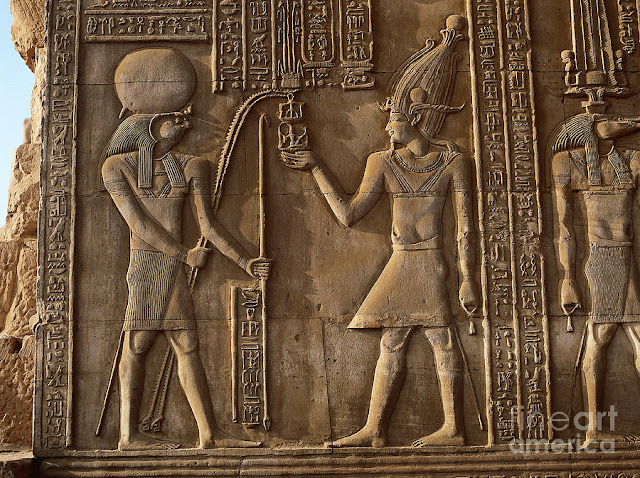Item code: 83
|
Year
|
1976
|
|
Obverse
|
Ahmad
ibn Tulun mosque in Cairo
|
|
Reverse
|
Temple of Kom Ombo, frieze.
|
|
Size
|
170 x 85 mm
|
Obverse description:
Mosque of Ahmad Ibn Tulun
The Mosque of Ahmad Ibn Tulun (Arabic: مسجد
أحمد بن طولون) is located in Cairo, Egypt. It is arguably the oldest mosque in the city surviving in its original
form, and is the largest mosque in Cairo in terms of land area.
The mosque was commissioned by Ahmad ibn
Tulun,
the Turkic Abbassid governor of Egypt
from 868–884 whose rule was characterized by de facto independence. The historian al-Maqrizi lists the mosque's construction start
date as 876 AD, and the mosque's original inscription slab identifies the
date of completion as 265 AH, or 879 AD.
The mosque was constructed on a small hill
called Gebel Yashkur, "The Hill of Thanksgiving." One local legend says
that it is here that Noah's Ark came to rest after the Deluge, instead of at Mount Ararat.
Reverse description:
Temple of Kom Ombo
Much of the temple has been destroyed by the Nile, earthquakes, and later builders who used its stones for other projects. Some of the reliefs inside were defaced by Copts who once used the temple as a church. All the temples buildings in the southern part of the plateau were cleared of debris and restored by Jacques de Morgan in 1893.
Frieze
 |
Egyptian
Frieze at
Kom Ombo
|
 |
| Egyptian Frieze at Kom Ombo |
What Is a Frieze in Ancient Egypt? The ancient Egyptians used art to record their history, to decorate their temples and other places of worship, and to personalize their tombs. The frieze was one of the most popular pieces of art that Egyptians created. A frieze was simply a long band of painting or sculpture on a wall. Most were carved or painted directly on the wall.





No comments:
Post a Comment